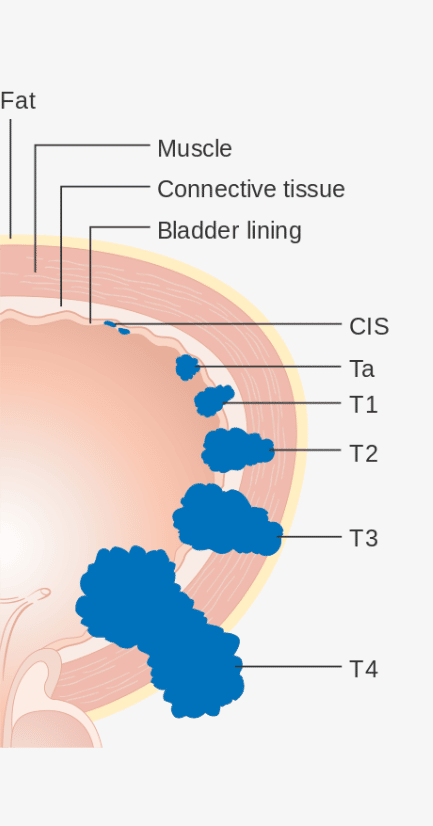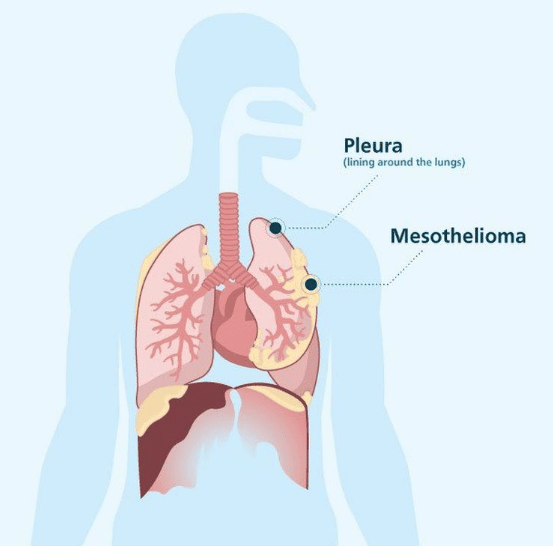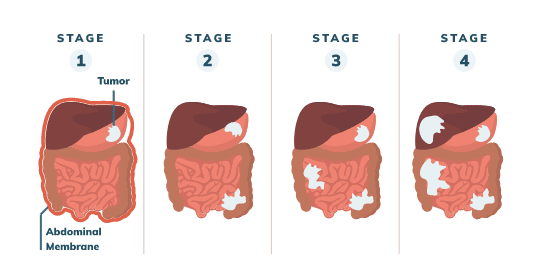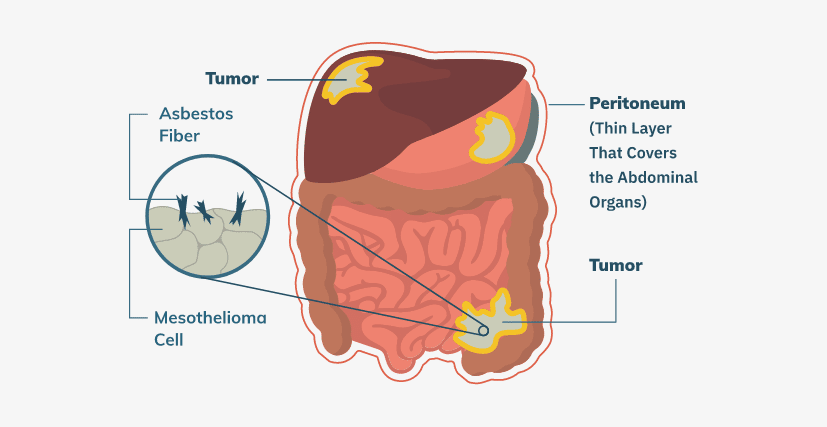Mesothelioma Stages
The stage of cancer refers to how advanced the cancer is and can impact the patient’s prognosis and treatment options. The stage is determined at the time the patient is diagnosed with mesothelioma. The standard classification system for cancer is stages 1 to 4, but it differs slightly for pleural and peritoneal mesothelioma cancer.
Home » National Mesothelioma Law Firm » Mesothelioma Cancer » Stages
Medically Reviewed By:
Patricia Shelton, M.D.
- Page Last Updated:
- November 13, 2023
Medically Reviewed By:Patricia Shelton, M.D.
- Page Last Updated:
- November 13, 2023
The stage of cancer refers to how advanced the cancer is. Accurate cancer staging is important because it has a significant impact on prognosis and cancer treatment options. A patient’s stage is determined as part of the process of mesothelioma diagnosis.
The stages of mesothelioma are described somewhat differently for different types of mesothelioma—pleural and peritoneal.
Stages of Pleural Mesothelioma
TNM Staging System
The TNM system is used for many types of cancer. Because the system was developed by the American Joint Committee on Cancer (AJCC), this is sometimes known as the AJCC Staging System. It classifies three characteristics of cancer:
- T: Tumor Size. The T refers to the size of the primary tumor—the tumor that developed at the initial location. Signifiers from T1 to T4 are used, with larger numbers referring to a larger tumor. To more precisely classify the size of the tumor, a letter may be used after the number. For example, T3a is smaller than T3b. If the primary tumor can’t be found, then the cancer is classified as T0. If it can be found but not accurately measured, then Tx is used.
- N: Lymph Node Involvement. The N refers to whether cancer has spread to nearby lymph nodes. In the most recent version of the staging system, lymph node involvement is classified as N1 if only lymph nodes on the same side of the chest are involved or N2 if lymph nodes on the opposite side also have cancer. If no lymph nodes are involved, the cancer is classified as N0. If the involvement of nearby lymph nodes can’t be classified, then it’s classified as Nx.
- M: Metastasis. Metastasis is the process of cancer spreading to other parts of the body. Cancer is classified as metastatic if cancer cells are found in an organ other than the one where the cancer originated, indicating that the cancer cells have spread widely through the body. M1 refers to cancer that has metastasized, while M0 indicates that it hasn’t metastasized. Mx means that the presence or absence of metastasis can’t be determined.

Numerical Stages
To simplify the classification of cancer stages, the National Cancer Institute notes another system is often used. This system classifies a cancer using numbers from 1 to 4, sometimes written as Roman numerals from I to IV.
For pleural mesothelioma, the journal Translational Lung Cancer Research defines a formal classification system that turns the TNM stage into a numerical stage. The stages are roughly similar to those that are used for many other types of cancer, such as lung cancer. However, there are some factors that are specific to malignant pleural mesothelioma.
Symptoms such as cough, chest pain, and difficulty breathing often aren’t apparent until the tumor has grown significantly. This can make the diagnosis of early-stage malignant pleural mesothelioma particularly difficult.
In some cases, people who have been exposed to asbestos undergo regular screening for mesothelioma, but the American Cancer Society says research has not shown that this is effective, and so screening programs are not yet in wide use.
Pleural Mesothelioma Treatment and Life Expectancy by Stage
The appropriate treatments for a pleural mesothelioma patient vary by the stage of the cancer. Even in its early stages, cancer is often treated aggressively because this can significantly prolong the patient’s life. However, in general, pleural mesothelioma is considered incurable, and even early-stage cancers have a relatively poor prognosis overall.
A cancer is called resectable if there’s a chance that potentially curative surgery could remove all visible cancer. If not, then the tumor is called unresectable.
Early-stage cancers (stages 1 and 2) are likely to be resectable, while cancers in an advanced stage are usually unresectable.
It’s important to note that the stage of cancer is not the only factor that’s used in determining the appropriate treatment. Other factors, including the cell type of the cancer as well as the patient’s age and other medical conditions, are important in creating a treatment plan.
Some patients may wish to enroll in clinical trials, which are research studies to test a new type of cancer treatment. Patients in all malignant mesothelioma stages might want to consider this option. You can search the National Cancer Institute’s database of current clinical trials to find the trials for which you may be eligible.

Average Life Expectancy by Stage
A study in the Journal of Thoracic Oncology shows that the average life expectancy for a pleural mesothelioma patient is about:
- Stage 1: 21 months
- Stage 1: 21 months
- Stage 2: 19 months
- Stage 3: 16 months
- Stage 4: 12 months
Treatment
Stage 1 pleural mesothelioma is generally considered resectable because the tumor is still confined to the pleura on one side. Patients with stage 1 pleural mesothelioma are candidates for extrapleural pneumonectomy or pleurectomy/decortication. In most cases, patients will also receive additional treatments, such as chemotherapy, immunotherapy, or radiation therapy, after surgery.
Even in stage 1, patients with sarcomatoid pleural mesothelioma, which involves the rare sarcomatoid cell type, may not be candidates for surgery because studies have shown that surgery is not effective in treating patients with this cell type.
Treatment
In general, stage 2 pleural mesothelioma is usually also considered resectable. In general, the treatment options are similar to those described for stage 1.
Treatment
However, for most stage 3 patients, surgery to remove the cancer is not likely to be effective. Instead, chemotherapy will likely be the primary form of treatment. Your oncologist will discuss your specific case with you and why they recommend a particular type of treatment.
Treatment
Some patients may undergo palliative surgery, which aims to remove particular tumors that are causing significant symptoms. Chemotherapy or radiation therapy may also be used to help shrink tumors that are causing discomfort. These treatments can make the patient more comfortable but will generally not improve life expectancy.
Peritoneal Mesothelioma Staging
There is not a formal staging system for peritoneal mesothelioma. This disease doesn’t fit well into the TNM staging system used for pleural mesothelioma and many other cancers because it usually spreads within the abdominal cavity rather than widely through the body.
To address this, a new peritoneal mesothelioma staging system has been proposed, which is a variation on the TNM system. A review of research in the Annals of Translational Medicine noted that the modified TNM system is useful in predicting the prognosis for peritoneal mesothelioma patients, even though it hasn’t yet been formally accepted as the official staging system for the disease.
Instead of tumor size, this system uses the peritoneal cancer index (PCI). To find the PCI, medical professionals divide the abdomen and pelvis into 13 regions. A number from 0 to 3 is assigned to each region, based on the number of tumors found in that region. The sum of the numbers gives a numerical PCI score up to 39. Higher numbers indicate that the cancer has spread more widely throughout the abdominal cavity.

Like with pleural mesothelioma, it’s important to note the stage of peritoneal mesothelioma is not the only factor that’s used in determining the appropriate treatment. Other factors, including the cell type of the cancer as well as the patient’s age and other medical conditions, are important in creating a treatment plan. Please consult with your doctor about the treatment plan right for you.
Studies have shown that this system is highly predictive of patient survival. The 5-year survival rates are:
- Stage 1: 87%
- Stage 2: 53%
- Stage 3: 29%
Peritoneal Mesothelioma Treatment
The best treatment for peritoneal mesothelioma is a procedure called cytoreductive surgery with heated intraperitoneal chemotherapy (CRS-HIPEC). This involves removing as much of the visible cancer as possible, then infusing a warmed solution of chemotherapy into the abdominal cavity. The treatment can be used at any stage and may significantly extend life in appropriately selected patients.

However, CRS-HIPEC is a very invasive procedure. Many patients aren’t eligible because they aren’t healthy enough to have this surgery. For these patients, chemotherapy given through an IV is the most common form of treatment.
Some patients with peritoneal mesothelioma may opt for palliative treatment only, focusing on their quality of life. Others prefer an option that may extend the length of their life so that they have more time with loved ones, even if it means that they experience significant side effects of their treatment.
According to Lung Cancer International, there are still clinical trials being done for malignant peritoneal mesothelioma, despite it being less common than malignant pleural mesothelioma.
Some patients opt to enroll in a trial in the hopes that an experimental treatment may extend their life.
By submitting this form, you agree to our terms & conditions. Please read the full disclaimer



